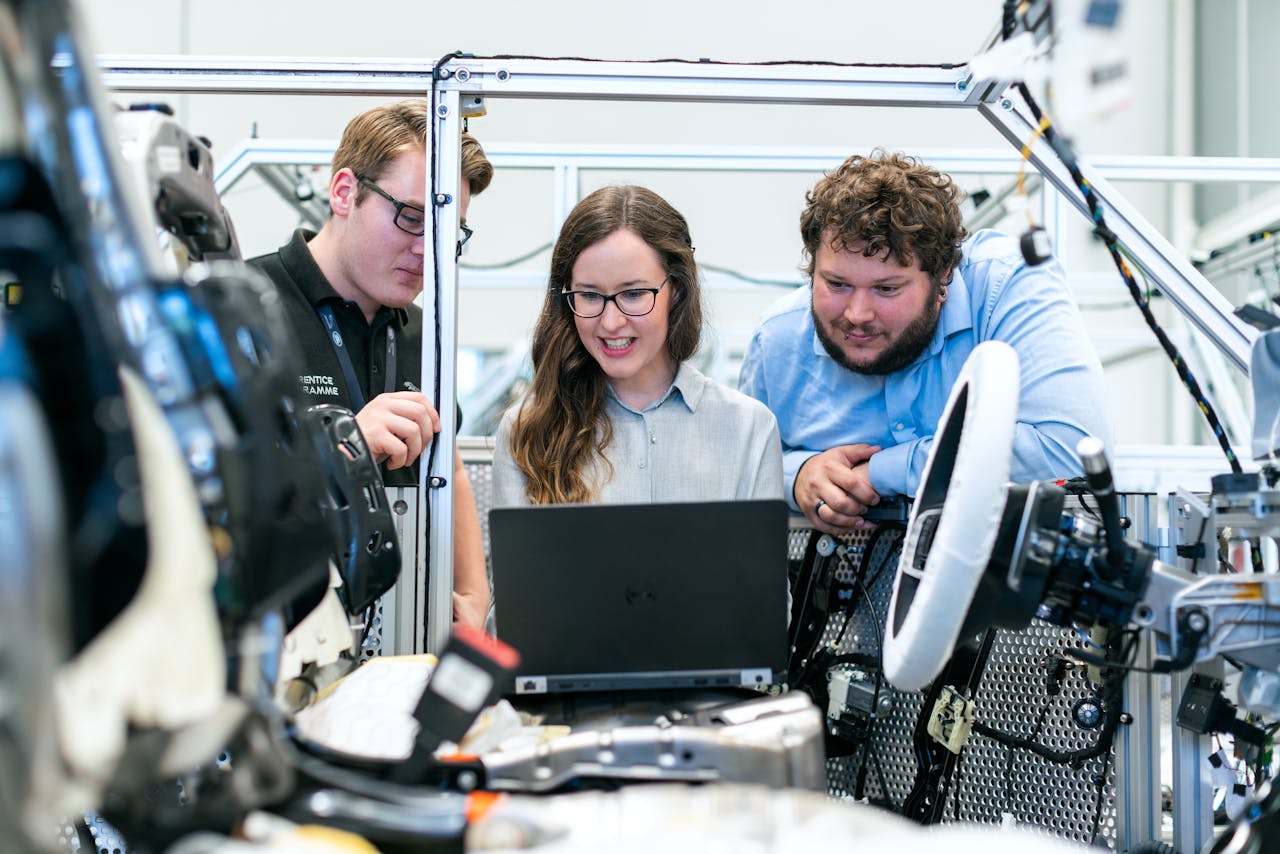In the dynamic landscape of the manufacturing industry, emerging as a leader requires a blend of strategic vision, operational excellence, and adaptability to technological advancements. The challenges and opportunities for industry participants change along with the evolution of global marketplaces. Whether you are a seasoned professional or an aspiring leader, understanding the key steps to thrive in the manufacturing sector is crucial. Let’s explore the essential strategies to carve your path to leadership in this ever-evolving domain.
Embrace Innovation and Technology Integration
In today’s manufacturing realm, innovation is not just a buzzword; it is a cornerstone for success. Being able to adopt and use technology innovations will set you apart from the competition as a leader. Your operations can become more efficient, productive, and process-streamlined by using manufacturing software solutions. Using cutting-edge technology, from artificial intelligence (AI) and sophisticated analytics to enterprise resource planning (ERP) solutions, enables you to maximize production cycles, reduce downtime, and deliver superior-quality products.
For instance, partnering with a forward-thinking drink manufacturer UK can showcase how these technological innovations are practically applied. This collaboration can highlight how integrating AI and ERP systems into beverage production can lead to improved efficiency, better quality control, and ultimately, more satisfied customers.
By staying at the forefront of technological innovation, you position yourself as a forward-thinking leader ready to navigate the industry’s digital transformation journey.
Prioritize Continuous Improvement Initiatives
Continuous improvement is not merely a methodology; it is a mindset that fuels organizational growth and competitiveness. Leaders in the manufacturing industry must promote a culture of continuous improvement. Encourage your staff to identify inefficiencies, bottlenecks, and potential improvement areas along the whole value chain. Implement robust methodologies such as Lean manufacturing, Six Sigma, or Total Quality Management (TQM) to drive operational excellence and eliminate waste.
Establishing a culture of continuous improvement helps you create a workforce that is dedicated to driving innovation, streamlining procedures, and producing outstanding results. Continuous improvement is a path of ongoing growth and refinement that drives your company toward excellence. It is not a one-time endeavor.
Invest in Talent Development and Training
In the rapidly evolving landscape of manufacturing, your most valuable asset is your people. Building a trained workforce that can satisfy the changing expectations of the business requires a significant investment in talent development and training. To improve their technical and soft abilities, provide your workers access to specialized training courses, workshops, and certifications. Give them the tools they need to adjust to new techniques, industry best practices, and technology.
Encourage a culture of information sharing and mentorship where skilled professionals train the next generation of leaders. By placing a high priority on talent development, your company can prevent shortages of employees and skill gaps in the future, in addition to building a high-performing workforce.
Forge Strategic Partnerships and Collaborations
In the interconnected world of manufacturing, collaboration is key to unlocking new opportunities and driving mutual growth. To increase your reach and skills as a leader, establish strategic partnerships with distributors, suppliers, research institutions, and technology providers. Work together on cooperative research and development initiatives to jointly develop creative solutions that meet market demands and foresee emerging trends.
To improve supply chain resilience, investigate new markets, and take advantage of economies of scale, leverage synergies with industry peers. By fostering strategic partnerships and alliances, you position your organization at the forefront of industry innovation and create a sustainable competitive advantage.
Cultivate a Customer-Centric Approach
In the age of heightened customer expectations, adopting a customer-centric approach is essential for long-term success in the manufacturing industry. Recognize the needs, goals, and pain points of your clients to provide customized solutions that go above and beyond their expectations. Utilize market insights and data analytics to forecast demand trends, customize products, and improve customer experiences.
Solicit feedback actively and use it to iterate on product design, functionality, and performance continually. Prioritizing client loyalty and happiness helps you establish yourself as a reliable industry leader who is dedicated to providing value in addition to revenue growth.
Maintain Regulatory Compliance and Ethical Standards
In the heavily regulated landscape of manufacturing, adherence to regulatory compliance and ethical standards is non-negotiable. Prioritize adhering to industry rules, environmental guidelines, and health and safety procedures as a leader to reduce risks and uphold your company’s responsibilities. Implementing advanced solutions such as industrielle Absaugsysteme (industrial extraction systems) can also play a critical role in meeting environmental and safety regulations by improving air quality and material handling processes.
Establish strong risk management procedures, governance structures, and QA procedures to guarantee responsibility, honesty, and openness in all aspects of your business.
To gain the respect and confidence of stakeholders, promote sustainability programs, ethical business practices, and corporate social responsibility (CSR) initiatives. You can protect the reputation of your brand and promote long-term market viability by sticking to a strict code of ethics and compliance.
Conclusion
In conclusion, becoming a leader in the manufacturing industry requires a multifaceted approach that encompasses innovation, continuous improvement, talent development, strategic partnerships, customer-centricity, and ethical conduct. Remember that being a leader involves more than just reaching personal goals; it also involves inspiring others, encouraging teamwork, and beneficially influencing the industrial sector as a whole. With a steadfast commitment to excellence and a forward-thinking mindset, you can position yourself as a visionary leader poised to shape the future of manufacturing.

